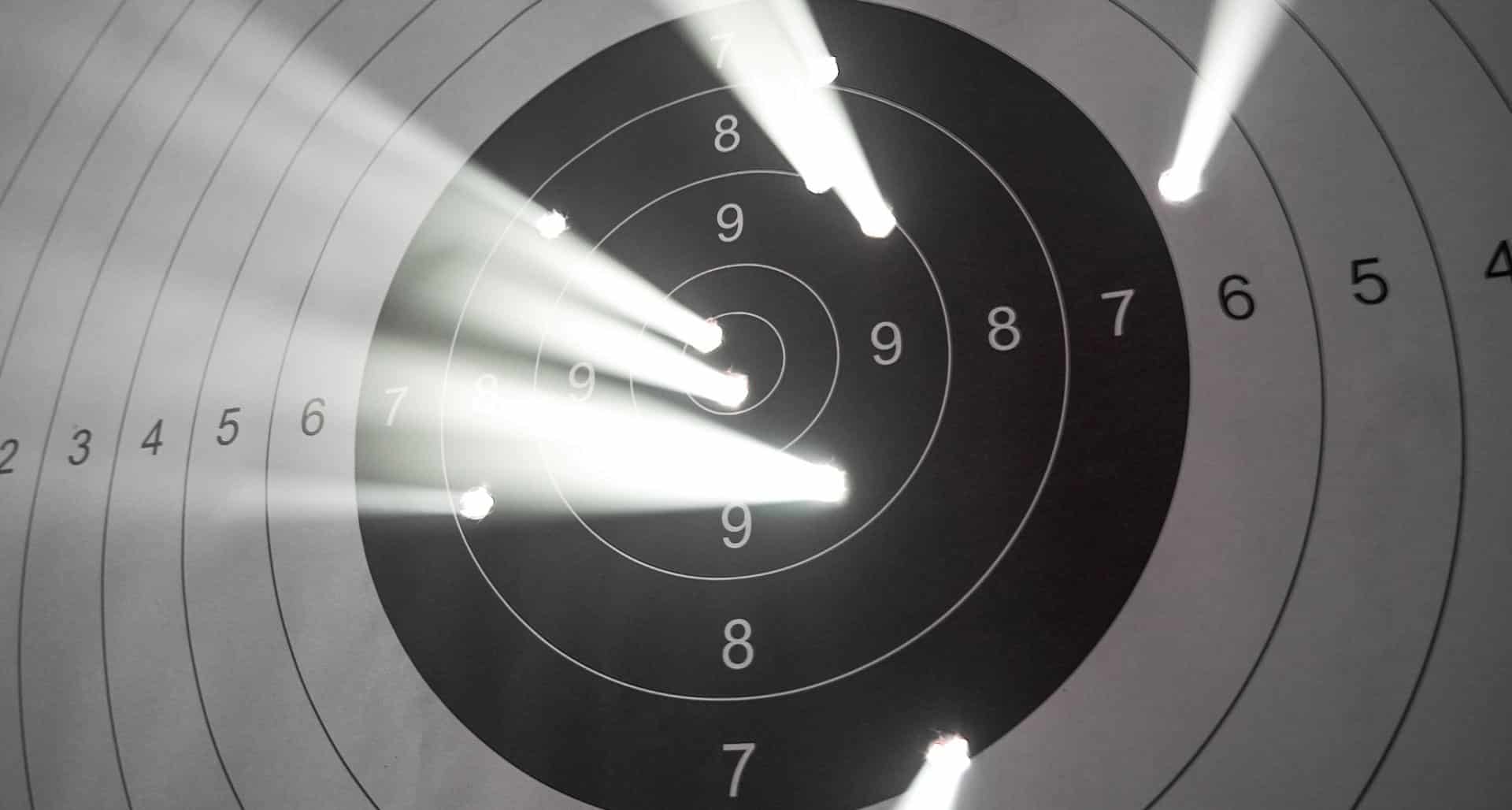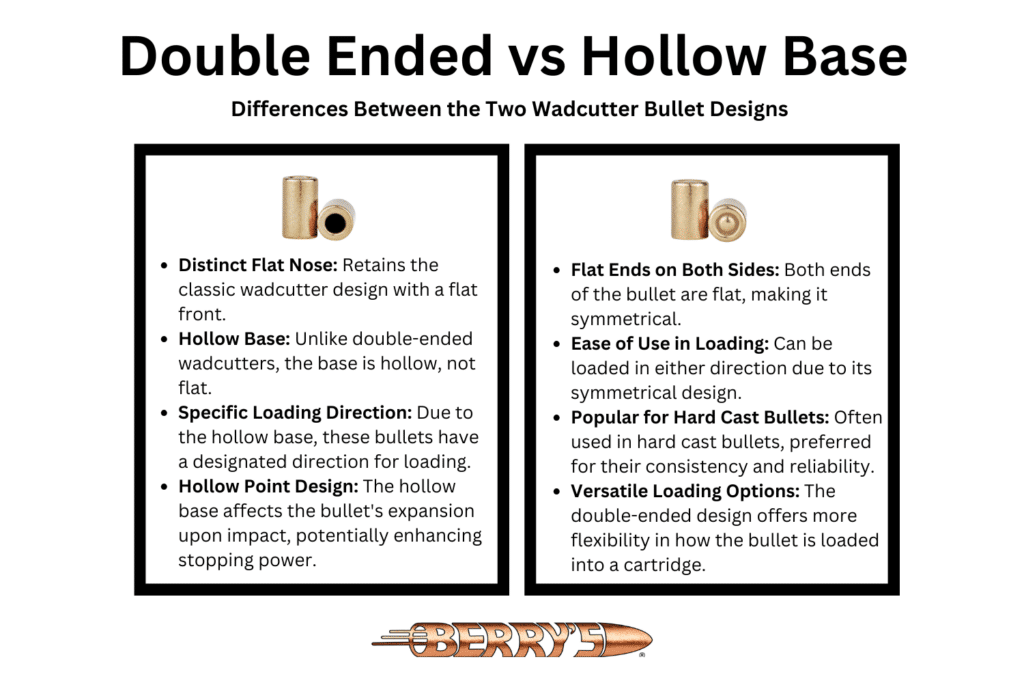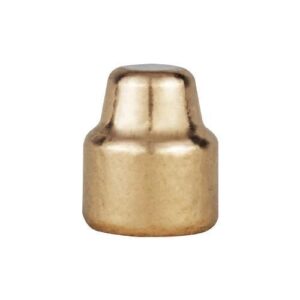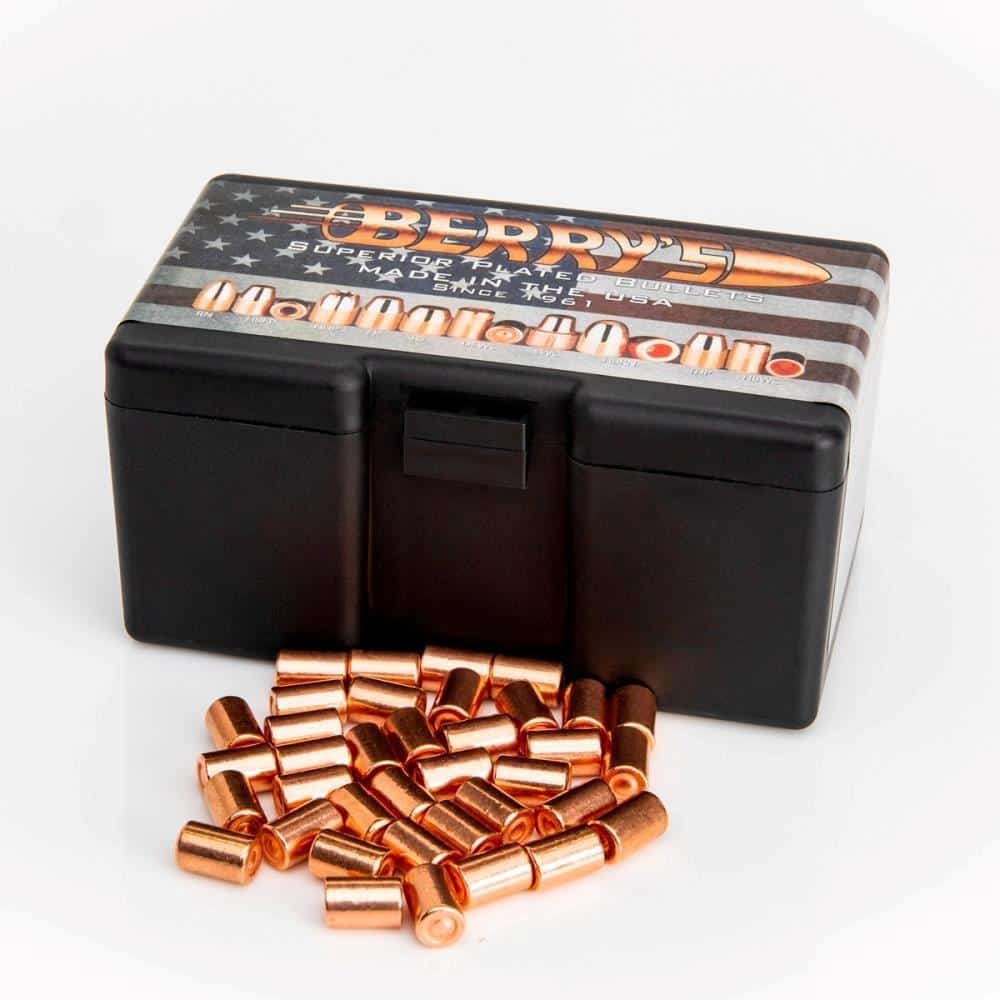Your cart is currently empty!

A Comprehensive Guide to Wadcutter Bullets
If you’ve become familiar with the world of bullets, you’ve likely come across a type of bullet called a wadcutter bullet. But what exactly is a wadcutter bullet? In this blog post, we will explore the world of wadcutter bullets, their types, what they’re used for, their advantages, and how their performance measures up to other bullet types.
In this comprehensive guide to wadcutter bullets, you’ll gain the knowledge you need to make informed choices about the right bullets for your needs. We’ll provide all the necessary information without overly pushing our products– though we do believe our line might interest you. So, whether you’re a recreational shooter, a competitive aficionado, or simply curious, this guide is for you. Read on and let’s embark on this enlightening journey together.
What is a Wadcutter Bullet?
Having set a comprehensive direction for our journey, let’s dive headfirst into understanding wadcutter bullets. The wadcutter (often referred to as a WC) is a unique bullet mainly designed for recreational shooting, standardly featuring a lube groove and a distinctive flat front.
THE DISTINCTIVE FLAT NOSE
So, what’s up with the flat front? Well, when a wadcutter bullet passes through a paper target, it creates a clean-cut, perfectly round hole. This easy-to-score feature makes the wadcutter bullet the de-facto choice in competitive target shooting since the round hole’s clear visibility allows for more accurate scoring.
HOLLOW-BASE VS DOUBLE-ENDED WADCUTTER BULLETS
That being said, wadcutter bullets are not just about the flat front. Wadcutter bullets can come in both hollow base and double ended form. In a double-ended wadcutter bullet, both ends are flat allowing the bullet to be loaded in either direction. This allows for ease of use and, coupled with their hard cast, makes double-ended wadcutter bullets a popular pick. In contrast, hollow base wadcutter bullets still sport the distinct flat nose, but instead of having an identical bottom, they feature a hollow point design.

HOW DO WADCUTTERS COMPARE TO OTHER BULLET TYPES
You might be thinking, “Okay, that sounds interesting. But how does the wadcutter differ from other bullet types?”. Well, when you compare the wadcutter to a standard round nose or flat point bullet, you quickly realize its intention is entirely different. While other bullets focus on penetration and damage upon impact, the wadcutter bullet favors precision and clean target impact.
WADCUTTER AMMUNITION
What about ammo? It’s crucial to note that not all ammo is made the same. Wadcutter ammo is specially calibrated to accommodate the bullet’s unique structure, resulting in excellent accuracy and performance, deemed ideal for paper target shooting in a controlled environment. However, ammunition is more expensive than buying your own superior-plated pistol bullets from Berry’s and loading it and a powder charge into your existing casings, allowing users to achieve the same level of accuracy and performance at a much lower cost than factory loads.
In summary, wadcutter bullets are unique in their design and purpose compared to typical bullet types, aiming for precision and clean target signature above all else. Now let’s delve deeper into how a slight variation to the wadcutter design resulted in another compelling bullet type – the semi-wadcutter.
What is a Semi-Wadcutter Bullet?
After our deep dive into understanding the prominence of wadcutter bullets, let’s turn our attention to their slightly modified sibling: the semi-wadcutter.

Semi-wadcutters (often abbreviated as SWC) offer a unique blend between full-wadcutters and bullet types designed for activities like hunting and self-defense that require higher velocity. Much like the wadcutter bullet, the semi-wadcutter has a flat top, but it also features a conical nose and a sharp shoulder. This unique design grants it greater versatility in use – a primary reason why the semi-wadcutter gets significant attention among shooters.
WHAT IS THE DIFFERENCE BETWEEN A SEMI-WADCUTTER AND A WADCUTTER?
So how does the semi-wadcutter bullet differ from a full wadcutter bullet? The semi-wadcutter, with its unique design of a flat tip combined with its conical nose, creates identifiable holes on impact like the full wadcutter, but also boasts better ballistic performance due to this altered shape. The semi-wadcutter bullet has a sharp shoulder that results in better penetration and expansion capabilities, making it a more suitable option than a full wadcutter for self-defense or hunting scenarios.
SIMPLER LOADING
It’s also important to note that whereas wadcutters, with their flat fronts, can sometimes face feeding issues in semi-automatic pistols, semi-wadcutters tend to be more reliable in such firearms, thanks again to their conical nose design.
Overall, when deciding between a wadcutter bullet versus a semi-wadcutter bullet, the choice often boils down to the primary intended usage. For pure target shooting needs, the wadcutter may edge out due to its unparalleled precision and clean-cut holes. However, for any scenario where penetration and expansion matter, semi wadcutters offer a handy compromise, combining the best of wadcutter and traditional bullet features.
Wadcutter Bullets: Use Cases
Now that we’re more familiar with wadcutter and semi-wadcutter bullets, let’s look at the practical ways they’re used in the world of shooting.
- Target Shooting: As highlighted before, the clean hole and round hole that wadcutter bullets create in paper targets is unmatched. Both casual and competitive shooters appreciate the distinct definition, making it easier to evaluate points per shot quickly and accurately. Along with their hard cast and flat front that makes scoring easy, full wadcutters have found their pride of place in target shooting.
- Self-Defense: While wadcutter bullets are designed primarily for plinking, semi-wadcutters combine the clean target cuts of wadcutters with the ability to create larger wound channels, making them more versatile. Their flat nose design can cause more initial shock and wound channels compared to a round nose. However, due to their low velocity, they still fall short when compared to traditional self-defense rounds.
- Competitive Shooting: Both wadcutters and semi-wadcutter bullets are useful in certain competitive shooting scenarios due to their excellent accuracy and distinct bullet holes.
Keep in mind that while the wadcutter bullet excels in the target practice domain, semi-wadcutters lend themselves slightly better to self-defense and hunting scenarios. Still, when compared to traditional self-defense rounds, they fall short. The key is to know what you need your bullet for and then make an informed decision based on what best suits your needs.
Is a Wadcutter the Right Bullet for Your Needs?
As we conclude our comprehensive guide into wadcutter bullets, it’s important to remember the importance of considering bullet type based on your shooting needs and specific firearm model. As we’ve discussed, each bullet type holds its unique advantages and limitations.

HOW BERRY’S BULLETS CAN HELP
At Berry’s Bullets, we pride ourselves on providing a comprehensive range of superior-plated pistol bullets designed for both semi-automatic pistols and revolvers, catering to your requirements and preferences. This included a .45 185 & 200 gr SWC as well as a .38/.357 wadcutter in both double-ended and hollow-base variations.
Our experience of over six decades in the shooting industry gives us the expertise to meet your unique needs with precision and quality. Whether you’re just beginning to engage in the shooting event culture or you’re an experienced shooter, we hope this guide served to broaden your understanding and deepen your knowledge of wadcutter bullets. Stay safe out there, and happy shooting!
